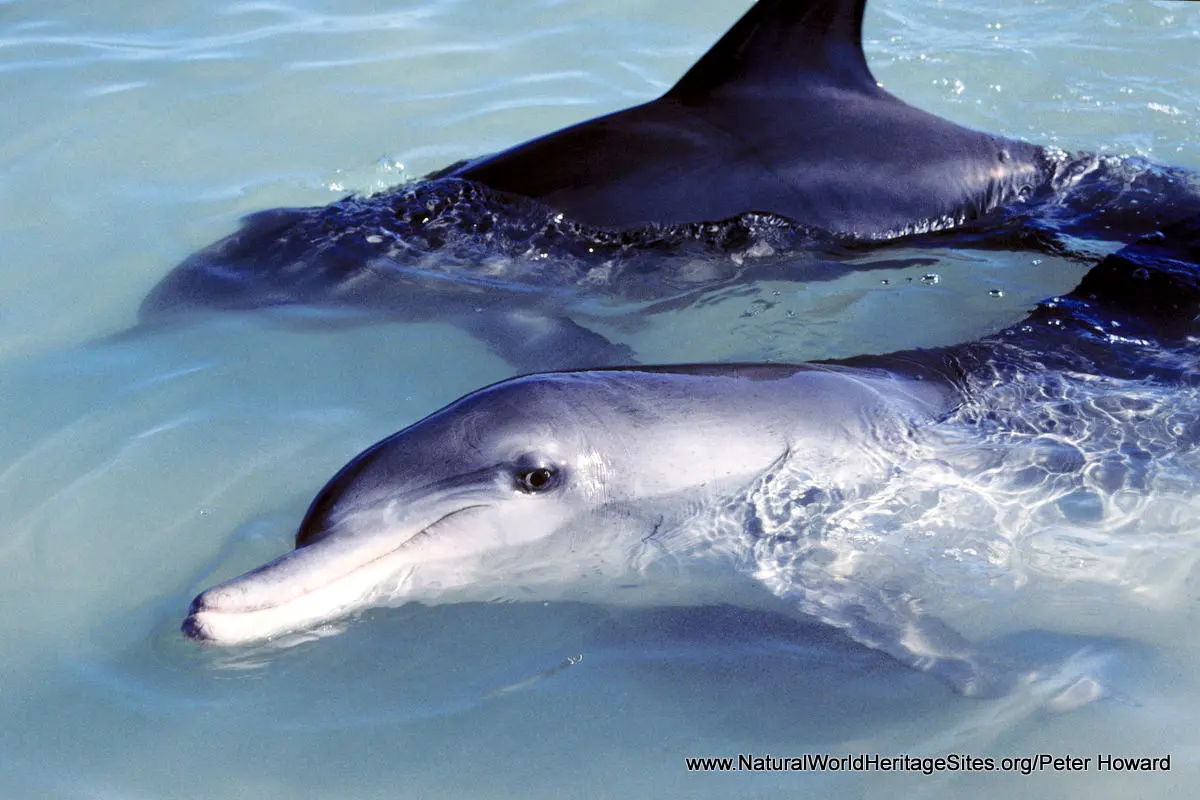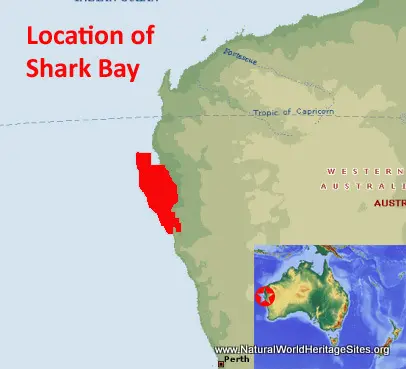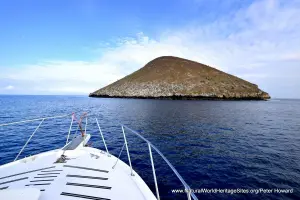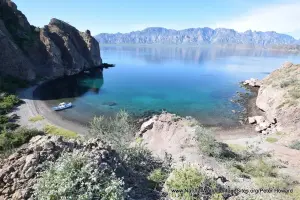EXPLORE Shark Bay, Western Australia with this slideshow, check the location map and get all the facts and information below.
For slideshow description see right or scroll down (mobile). Click to view slideshow
Location and Values: Shark Bay is located along the Indian Ocean coast of Western Australia, some 700km north of Perth. It is a massive complex of protected areas (under a variety of official designations) that collectively protect the waters, islands and coastal areas around the bay. It is one of relatively few sites globally that satisfies all four of the world heritage natural criteria. The area’s outstanding natural features include (1) its stromatolites, hard dome-shaped deposits of algae similar to the oldest forms of life on Earth; (2) its vast species-rich sea-grass beds; and (3) its substantial population of dugongs (‘sea cows’). In addition to these special features, Shark Bay is an area of exceptional coastal scenery, and serves as a refuge for many globally threatened species including two species of wallaby, green and loggerhead turtles, humpback and southern right whales and large numbers of sharks and rays. A famous population of bottlenose dolphins lives in the bay and can be observed at close quarters from the shore at Monkey Mia.
Conservation Status and Prospects. According to IUCN’s Conservation Outlook Assessment (2017) the conservation status of Shark Bay, Western Australia is ‘good’. The IUCN report notes that ‘the site’s World Heritage values are subject to only minimal threats. The robustness of its geological values and its effective management regime combine to minimize threats to its integrity. Similarly, the site’s biodiversity values, which are more sensitive to anthropogenic impacts, are affected mainly by low threats, with the exception of ocean acidification, sea level rises, flooding and increasing temperatures in the marine environment. Human disturbance, including from recreational activities, continues to be a threat, although visitation levels remain low and this threat is appropriately managed. The spread of existing invasive species and potential introduction of new ones will continue to be a risk and therefore will require continued management responses and a consolidated strategy.’
Links:
Google Earth
UNESCO Official Website
IUCN Conservation Outlook
UNEP-WCMC Site Description
Slideshow description
The slideshow ‘tells the story’ of Shark Bay, Western Australia, showing typical landscapes of this coastal and marine area, the main terrestrial vegetation types and habitats, plants and animals. The photos were taken by Peter Howard in 1998, so they are now rather old, but they still give a good general impression of the landscapes and the key attributes which qualify the place for world heritage status. The slideshow starts with a few introductory scenes including the secure fence installed to protect the area from stray livestock and potentially damaging alien species (such as foxes). It continues with a series of photos of the friendly pod of wild bottlenose dolphins that regularly swims into shore at Monkey Mia, where they interact with people. From nearby, boat excursions take visitors out to view dugongs (sea cows) over the sea-grass beds in the shallow bay. Some of the spectacular coastal scenery is shown, featuring small offshore islands, coastal cliffs, dune fields and coastal scrub vegetation. The slideshow then continues with a series of photos of the stromatolites at Hamelin Pool, which can be viewed from a raised boardwalk. The final part of the slideshow highlights the efforts management authorities are making to eliminate alien exotic animals, such as foxes (with poisoned bait) and maintain the indigenous fauna and flora by excluding non-native species with heavy-duty fencing.
Factfile
Website Category: Marine & Coastal;
Area: 22,009 km2
Inscribed: 1991
Criteria:
- Exceptional natural phenomenon (vii);
- Outstanding natural beauty (vii);
- Geological features (viii);
- Ecological processes (ix);
- Significant number of rare, endemic and/or endangered species (x)





